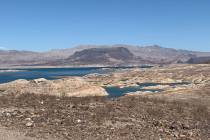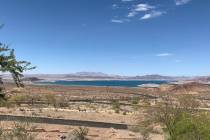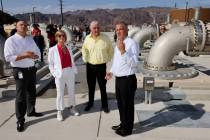The Southern Nevada Water Authority has a plan for how the seven states that rely on the Colorado River can protect Lake Mead and Lake Powell.
Lake Mead/Hoover Dam
Federal officials on Friday, Dec. 16, warned of a future in which Lake Mead could soon fall to a point where the Colorado River system would “stop functioning.”
As Western water managers are gathering in Las Vegas this week, a long-sought deal to curtail water use along the cratering Colorado River still seems a ways off.
Max Convis never imagined a day when park officials would even consider the option of restricting boat access to Lake Mead, a reservoir he has boated on for half a century.
Even as other communities in the Las Vegas Valley have recycled water since the 1960s, the city closest to Hoover Dam uses up to 500 million gallons a year one time and then casts it away, lost to the air and desert.
Shrinking water levels are creating a murky unknown about recreational boating on Lake Mead.
With the negotiations between states at an impasse over how to address the dwindling Colorado River, the Interior Department announced Friday, Oct. 28, that it is taking its first step toward potentially revising the current guidelines for the river’s two major dams.
A Clark County teen has died from a rare brain-eating amoeba that he was probably infected with while in Lake Mead, according to the Southern Nevada Health District.
Boats and bodies aren’t the only things revealing secrets at Lake Mead.
After falling more than 27 feet since the start of the year, Lake Mead got a bit of a bump thanks in part to the August monsoon season.
While many people are fretting over the massive reduction of water at Lake Mead, the over 387 species of animals that call the lake home have also had to adjust to the drought.
Lake Mead is projected to drop about 30 feet over the next two years based on the “most probable” outlook by the Bureau of Reclamation released Aug. 31.
Despite the heat wave, it’s getting close to the time of year when swimming pool owners might drain their summertime splash/tanning zone for winter.
Major urban water suppliers up and down the Colorado River, including the Southern Nevada Water Authority, announced on Aug. 24, a joint commitment to significantly expand water conservation efforts and reduce water demands.
Some of Nevada’s top water conservation and climate science minds are coming together to help the state handle the worsening drought and declining levels at Lake Mead.















